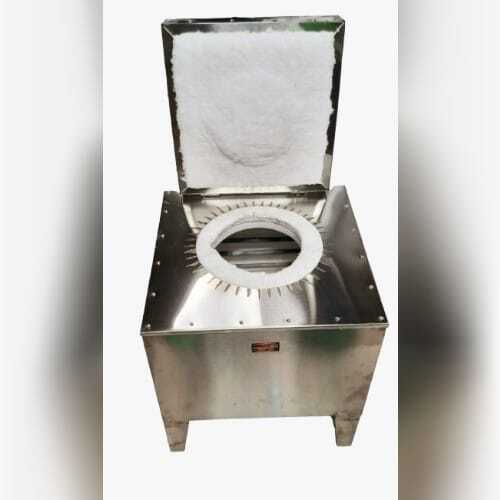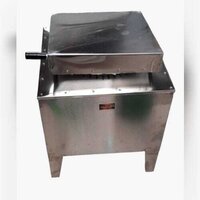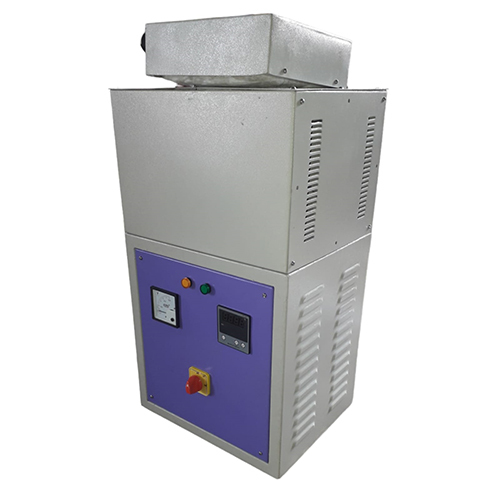industrial Milting Machine(25kgs /50kgs)
Product Details:
- Features Compact design durable stainless steel body efficient milling
- Operating Temperature Ambient
- Connectivity Options Manual Operation
- Cooling System Natural Cooling
- Power Rating 500W
- Accuracy High
- Machine Type Industrial Milting Machine
- Click to View more
industrial Milting Machine(25kgs /50kgs) Price And Quantity
- 5 Piece
- 42000.00 INR/Unit
industrial Milting Machine(25kgs /50kgs) Product Specifications
- 50cm x 50cm x 30cm Inch (in)
- Manual Lubrication
- Button Control
- 25kgs - 50kgs per batch Kg/hr
- 220V
- 1 Year
- Advanced Milling Technology
- Stainless Steel
- Semi-Automatic
- 220V
- Electric
- 50 Hz
- Polished Stainless Steel
- Low
- High
- Industrial Milting Machine
- Industrial grain milling spice processing
- Milling Machine
- 500W
- Ambient
- 25kgs/50kgs Kilograms (kg)
- Compact design durable stainless steel body efficient milling
- Metallic/Silver
- Natural Cooling
- Manual Operation
industrial Milting Machine(25kgs /50kgs) Trade Information
- 10 Piece Per Day
- 5 Days
- Contact us for information regarding our sample policy
- wooden packaging
- All India
Product Description
1. Purpose:
- Designed to melt metals like aluminum, brass, copper, and other non-ferrous materials.
- Typically used in foundries, manufacturing units, or for recycling metal scrap.
2. Capacity:
- Can melt 25kg or 50kg of metal in a single batch, depending on the model.
- Ideal for small to medium-scale industrial operations or businesses.
3. Heating Element: Carbon Rod:
- The heating element is made from carbon rods, known for their high resistance to heat and electrical conductivity.
- Carbon rods provide consistent and high temperature, allowing efficient melting.
- Carbon rods can reach temperatures required for melting metals quickly, reducing melting time.
4. Temperature Range:
- The machine typically operates at temperatures between 600C to 1300C, depending on the metal being melted.
- Capable of achieving sufficient heat to melt metals with lower melting points like aluminum (660C) and higher melting points like copper (1085C).
5. Power Supply:
- Requires a high-voltage power supply for the carbon rods to produce the necessary heat.
- Usually operates with a 3-phase electric system or other high-power configurations, depending on the machine size.
6. Melting Chamber:
- The melting chamber is built from heat-resistant materials (such as refractory bricks or ceramic) to withstand the high temperatures generated by the carbon rod heating element.
- The chamber is designed to retain heat efficiently and prevent energy loss.
7. Insulation:
- Equipped with thermal insulation to reduce heat loss and improve energy efficiency.
- The insulation helps maintain consistent temperatures inside the chamber and reduces the load on the heating element.
8. Control System:
- Comes with an advanced digital or analog control panel to regulate the temperature, power supply, and melting process.
- May include temperature controllers, timers, and automated features for better control and consistency in melting.
9. Safety Features:
- Equipped with overheat protection, thermal cutoffs, and emergency shutoff mechanisms to ensure safe operation.
- The design often includes protective covers and heat shields to minimize exposure to high temperatures.
10. Material Compatibility:
- Suitable for various metals such as aluminum, zinc, copper, lead, brass, and other alloys.
- Specific machines might be tailored to handle certain materials better depending on their melting requirements.
11. Energy Efficiency:
- Designed to minimize energy consumption while maintaining effective melting capabilities.
- Insulated chambers and efficient heating elements like carbon rods contribute to lower operational costs.
12. Maintenance:
- Regular inspection and replacement of carbon rods are required due to wear from continuous heating.
- Other maintenance includes checking for insulation degradation and ensuring electrical connections are in good condition.
13. Automation and Customization:
- Some machines may come with automated pouring systems, reducing the manual labor required after the metal is melted.
- Customizable features might be available depending on the needs of the industrial application, such as size adjustments for different metal volumes.
14. Application Areas:
- Foundries: For casting metals into molds for various industrial uses.
- Metal Recycling: Melting down scrap metal for reuse.
- Manufacturing: Used in producing components or alloys.
- Art & Jewelry: Used in melting metals for custom casting or crafting.
This kind of industrial melting machine ensures efficient, fast, and safe metal melting with carbon rods as the heat source, offering versatility for a range of applications.

Price:
- 50
- 100
- 200
- 250
- 500
- 1000+
Other Products in 'Milting Machine' category
 |
NEW ASHIRBAD ENGINEERING
All Rights Reserved.(Terms of Use) Developed and Managed by Infocom Network Private Limited. |

 Send SMS
Send SMS




